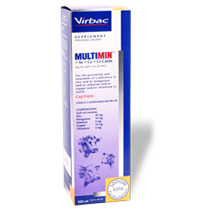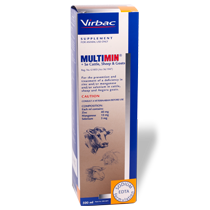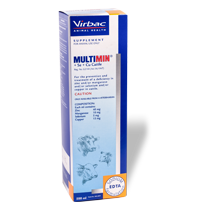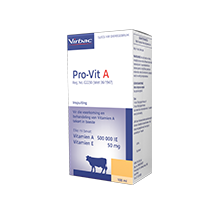
Precision farming with injectable trace minerals for dairy herds
For high-producing dairy cattle, it is important that the feed or concentrate contains trace minerals, which are essential as a daily supplement. However, oral supplementation has certain limitations, such as variation in intake (and thus trace mineral intake), especially when the dairy cow's feed intake drops drastically as is normally the case shortly before and after calving. Furthermore, antagonists such as calcium (Ca), iron (Fe) and sulphur (S), which can be present in the feed or water, play a major role, as they can negatively affect the uptake of trace minerals in the digestive tract.
Injectable trace mineral supplements have been used in South Africa for almost 30 years and have been developed to overcome most of the problems of oral supplementation. An injectable product bypasses the antagonists in the digestive tract, with the trace minerals being absorbed directly from the injection site and circulated via the bloodstream throughout the body for uptake and storage in the liver and other organs.
Furthermore, it has the advantage that each animal gets its rightful amount. Injectable sources are given as a top-up supplement approximately 30 days before the start of critical events in the production cycle of dairy cows, when the need for trace minerals is generally higher; for example, during dry off, steam-up or before AI. A positive effect on animal production and health was still observed with MULTIMIN®, even though the trace mineral levels in the feed were considered adequate, or even more than adequate.
Trace minerals found in a balanced, injectable product, such as zinc, manganese, selenium and copper, are incorporated into the body's antioxidant enzyme system. When a cow is in a high production phase, such as late pregnancy when foetal growth increases drastically, and she transfers around 30% of her trace minerals to the unborn calf, or when animals are stressed, especially during handling and, for instance, lactation, then oxidative stress increases in the body, which can lead to reduced animal production and health. Antioxidants help combat oxidative stress in the animal.
This is then the reason we recommend to give an injectable trace mineral source 30 days before a critical event, as the body needs time to utilise the trace minerals, as well as generate key antioxidant enzymes. By giving the pregnant animal a top-up supplement before calving, we supplement, among other things, what she has transmitted to the foetus, and for her other body functions requiring trace minerals.
It has been proven in several scientific studies that a balanced, injectable trace mineral source improves the conception percentage and reduces the number of open days in cows – in other words cows conceive earlier.
If we take a closer look at each trace mineral's role in reproduction, we see that manganese (Mn) plays an important role in the production and regulation of reproduction hormones, which are important for the cows to come onto heat (or oestrus), maturation of follicles, and the successful release of oocytes.
Zinc (Zn) plays an important role in the successful fertilisation of the ovum and the development of the embryo, as zinc is essential in rapidly dividing cells.
Copper (Cu) is important in embryo survival and a lack of copper can delay or suppress the onset of the oestrus cycle.
Selenium (Se) is known as the "fertility trace mineral". It plays an important role in egg cell development, fertilisation, and embryo survival. Optimal levels of selenium, in conjunction with vitamin E, are important to prevent/reduce early embryonic losses (or resorption). Vitamin A on the other hand works synergistically with zinc, which is why we recommend giving vitamin A and E together with a good injectable trace mineral source.
Studies show that chromium has the ability to lower subclinical metritis and increase the number of viable oocytes.
And of course, all these trace minerals boost the immune system. A healthy animal's reproduction rate is obviously better!
Remember, more is not always better! Be aware of toxicity and adhere to the recommended dosage and directions of use. An injectable source does not replace oral supplementation of trace minerals in licks or feeds. Rather use a good, proven injectable trace mineral source as a precision tool in your farm to support or complement a good oral supplementation strategy.
An injectable trace element preparation should meet certain requirements to ensure maximum effectiveness. It is important that it is highly bioavailable, is rapidly absorbed into the bloodstream at the site of injection and stored in the liver for later use.
Furthermore, the minerals must be in a balanced ratio and also contain sufficient levels of trace minerals to achieve a significant effect. It is always wise to look at the scientific, published research that supports the product's efficacy and effectiveness - therefore, use a product that has been tested and that you can trust, such as MULTIMIN®.





